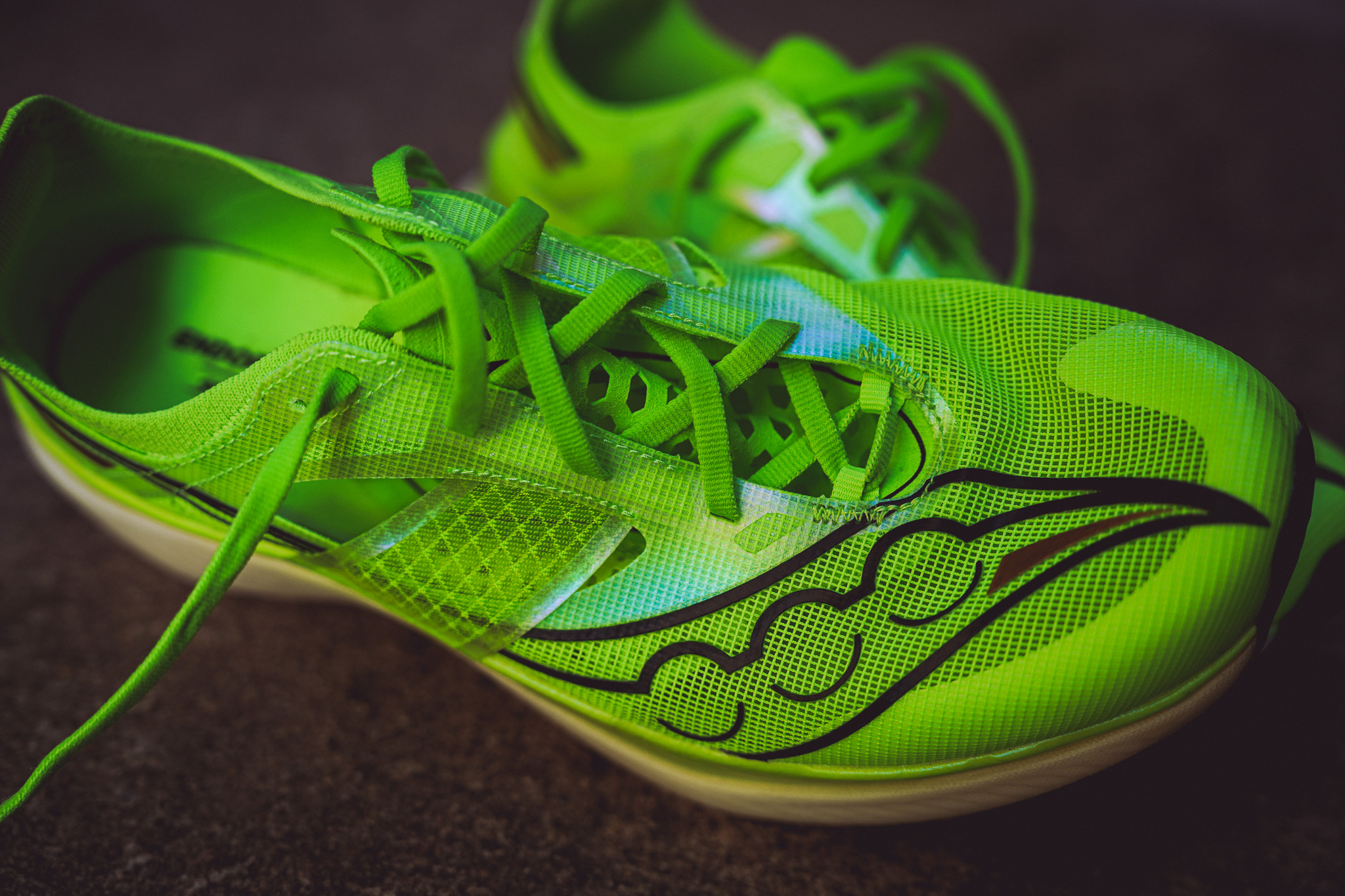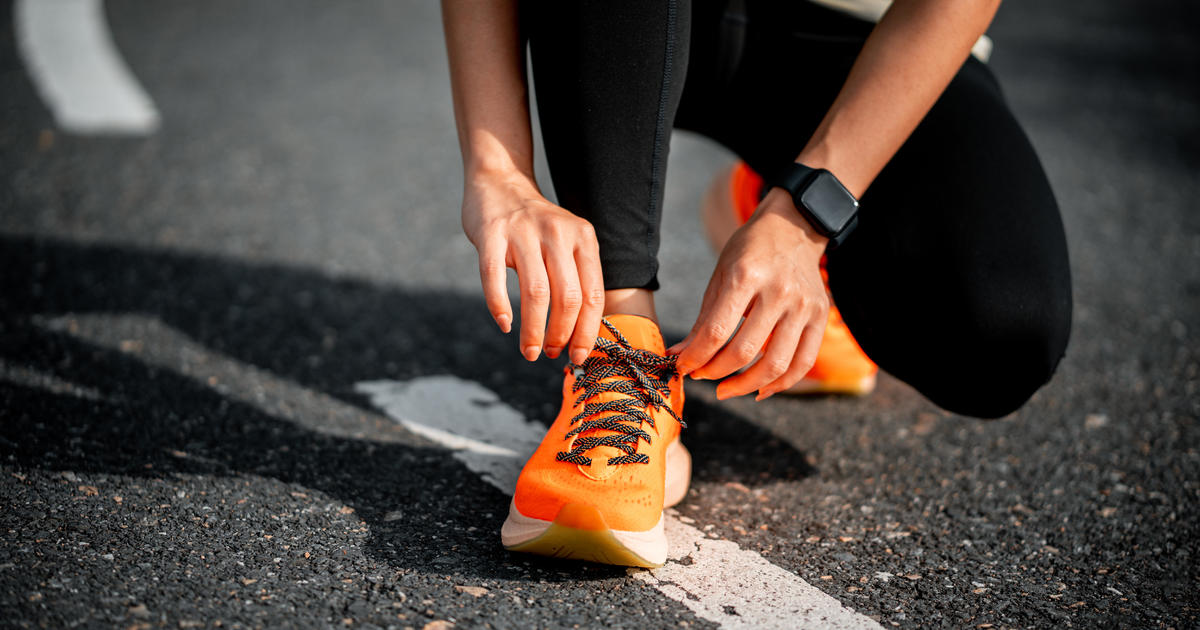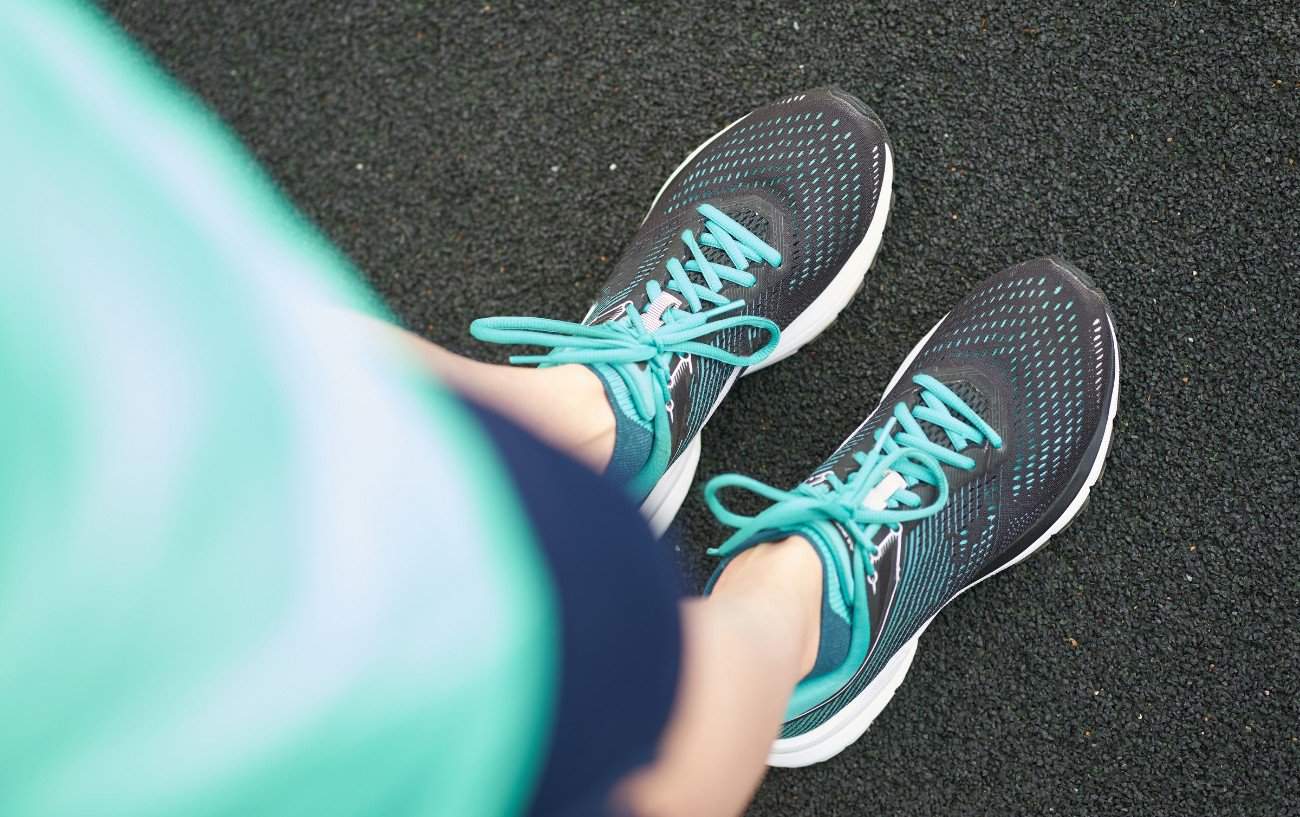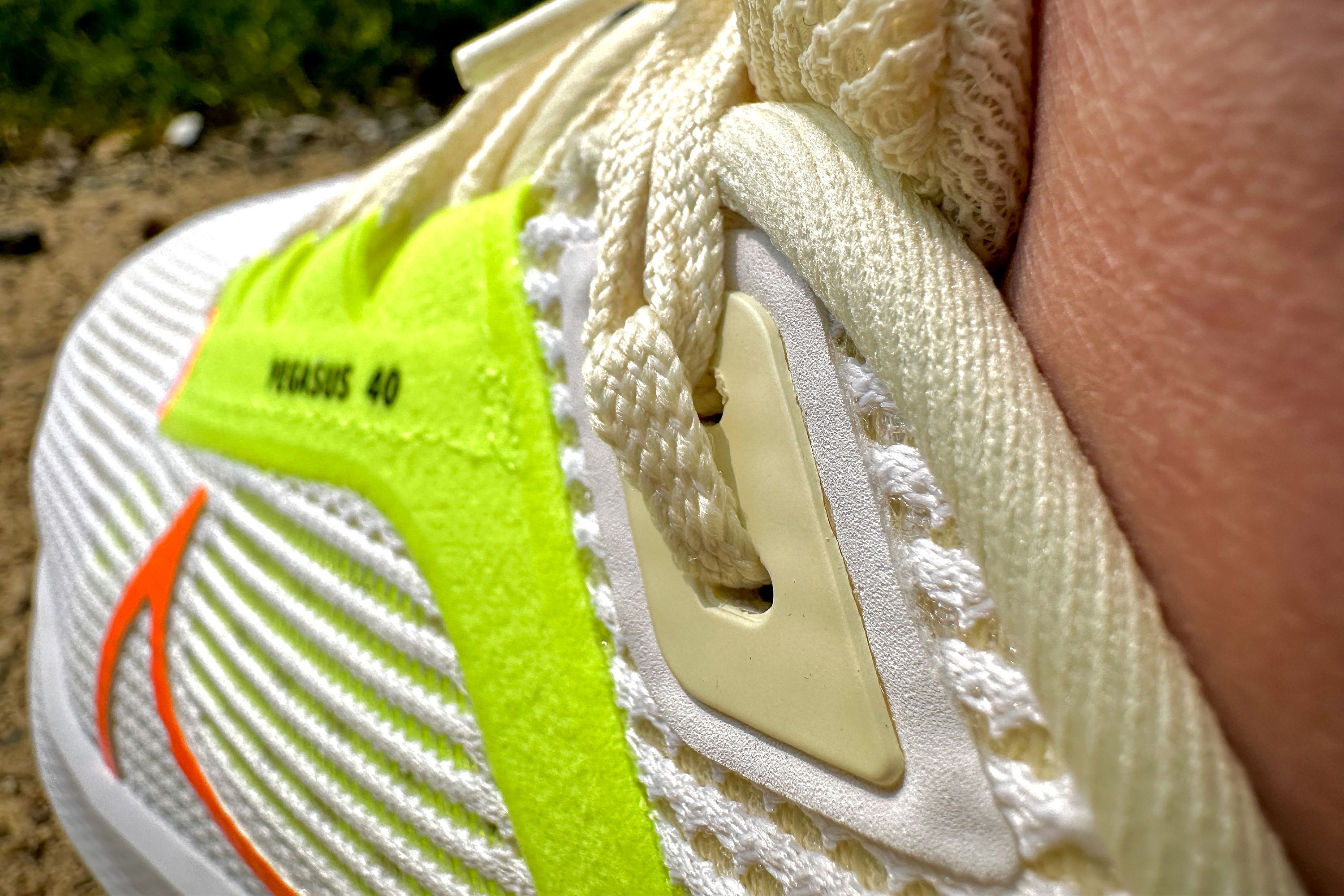

Featured
How To Do A Heel Lock On Running Shoes
Modified: January 22, 2024
Learn how to do a heel lock on your running shoes with our featured tutorial. Improve your running performance and prevent heel slippage.
Introduction
Running is a popular form of exercise and a fantastic way to stay fit and healthy. Whether you’re a seasoned runner or just starting out, you know that having the right pair of running shoes is essential for a comfortable and injury-free experience. But did you know that there’s a technique you can use to further enhance the fit of your running shoes? It’s called a heel lock, and in this article, we will explore what it is, its benefits, and how to do it properly on your running shoes.
A heel lock, also known as a runner’s loop or lace lock, is a method of lacing up your shoes that provides extra support and stability to the heel area. By incorporating a heel lock into your lacing technique, you can prevent your foot from sliding forward inside the shoe, reduce heel slippage, and minimize the risk of blisters and discomfort.
In this guide, we will walk you through a step-by-step process on how to do a heel lock on your running shoes. But before we get into that, let’s take a closer look at the benefits of using a heel lock and when it is most advisable to apply this technique.
What is a Heel Lock?
A heel lock is a method of lacing up your running shoes that provides additional stability and support to the heel area. It involves creating a loop in the lacing system around the ankle and tightening it to secure the heel in place. This technique is particularly useful for runners who experience heel slippage or foot movement inside their shoes during physical activity.
The heel lock works by creating a “cinching” effect around the ankle, which prevents the foot from sliding forward within the shoe. This not only improves the overall fit of the shoe but also reduces friction and rubbing that can lead to painful blisters or discomfort during long runs or intense workouts. By locking the heel in place, the technique ensures that your foot remains secure and stable, allowing for a more efficient running stride and reducing the risk of injury.
To create a heel lock, you start by adjusting the laces in the lower part of the shoe to achieve a snug fit. Then, as you move further up the lacing system, you create a loop on each side of the shoe by crossing the laces over each other. These loops act as anchor points for the remaining lacing, allowing you to tighten the upper part of the shoe while keeping the heel secure.
While a heel lock may seem like a simple technique, it can make a world of difference in terms of comfort and performance during your runs. By implementing this method, you can customize the fit of your running shoes to better suit your foot shape and prevent any unwanted movement or slippage. This can be especially beneficial for runners with narrow heels or those who require extra stability and support in the heel area.
Benefits of Using a Heel Lock
Using a heel lock technique when lacing up your running shoes offers several benefits that can greatly enhance your running experience. Let’s take a closer look at some of the advantages of incorporating a heel lock into your shoe lacing routine.
- Improved Stability: The primary benefit of using a heel lock is the added stability it provides to the ankle and heel area. By preventing your foot from sliding forward inside the shoe, the technique keeps your foot securely in place, minimizing unwanted movement and reducing the risk of ankle sprains or other injuries.
- Enhanced Comfort: Heel slippage can be a frustrating issue for many runners, as it can lead to discomfort, blisters, and a distraction from an otherwise enjoyable run. The heel lock technique eliminates this problem, ensuring a snug fit that keeps your foot in the ideal position, reducing friction and rubbing, and increasing overall comfort.
- Better Foot Support: A heel lock can also provide additional support to the arch of your foot. By keeping the heel securely in place, it helps maintain proper alignment and prevents excessive pronation or supination, reducing strain on the arch and promoting a more efficient running gait.
- Customized Fit: Every runner has unique foot anatomy, and finding the perfect fit can be challenging. By incorporating a heel lock, you can customize the fit of your running shoes to better suit your foot shape and size. This can be particularly beneficial for individuals with narrow heels or those who require additional heel support.
- Prevention of Blisters: Blisters are a common nuisance for runners, particularly when the foot moves around inside the shoe. The heel lock technique reduces friction and minimizes the risk of blisters by keeping the foot stable and preventing excessive rubbing against the shoe.
Incorporating a heel lock into your shoe lacing routine is a relatively simple and effective way to enhance the fit, stability, and overall comfort of your running shoes. Whether you are preparing for a race or going for a leisurely jog, implementing a heel lock can make a significant difference in your running performance and overall enjoyment.
When to Use a Heel Lock
Knowing when to use a heel lock technique can help you optimize the benefits it offers. While it’s a personal preference, there are specific situations where utilizing a heel lock can be particularly advantageous. Let’s explore when it’s the ideal time to use a heel lock on your running shoes.
Long-Distance Runs: If you’re planning to tackle a long-distance run, such as a half marathon or marathon, using a heel lock can be beneficial. These longer runs often involve repeated foot strikes and prolonged periods of running, increasing the likelihood of foot movement and heel slippage. By utilizing a heel lock, you can ensure that your feet stay secure and comfortable throughout the entire distance.
Trail Running: Trail running presents unique challenges compared to running on paved surfaces. Uneven terrain, inclines, and descents can cause the foot to slip inside the shoe, leading to instability and potential injuries. Incorporating a heel lock while trail running can keep your feet locked in place, providing the stability and control needed to navigate challenging trails effectively.
Downhill Running: When running downhill, the force of gravity can pull your foot forward inside the shoe, resulting in increased heel slippage. A heel lock can counteract this by keeping your foot securely in place, preventing unnecessary movement and reducing the risk of discomfort and blisters.
Racing and Speed Workouts: During races or speed workouts, every second counts, and any foot movement inside the shoe can cause a loss of momentum and energy. By utilizing a heel lock, you can minimize heel slippage and ensure a secure fit, allowing you to focus on your performance and achieve your desired pace.
Individual Foot Anatomy: If you have narrow heels or experience frequent heel slippage in your running shoes, incorporating a heel lock into your lacing routine can provide the added support and stability you need. It allows you to create a customized fit that specifically addresses your foot’s unique characteristics, promoting a more comfortable and secure running experience.
Ultimately, the decision of when to use a heel lock depends on your personal preference and the specific demands of your running activity. Experiment with the technique during different running conditions to determine when it provides the most benefit for you.
Step-by-Step Guide for Doing a Heel Lock on Running Shoes
Doing a heel lock on your running shoes may seem daunting at first, but it’s actually a straightforward process. Follow these simple steps to ensure you achieve a secure and comfortable fit with your heel lock.
- Step 1: Loosen the Laces: Start by loosening the laces on your running shoes to create ample room for your foot to slide in comfortably. This initial loosening will ensure that the shoe is easy to put on and adjust during the lacing process.
- Step 2: Begin Lacing: Insert your foot into the shoe and pull the laces snugly across the tongue of the shoe, starting from the bottom. Ensure that the laces are evenly tensioned on each side of the shoe.
- Step 3: Create the Loops: As you reach the upper part of the shoe, take each lace end and cross them over each other to form small loops or “ears” on each side of the shoe. The loops should be located just above the ankle area.
- Step 4: Criss-Cross and Feed Through: Take both lace ends and criss-cross them over the tongue of the shoe, threading them through the opposite loops on each side. This will create a secure “cinching” effect around the ankle.
- Step 5: Tighten and Adjust: Pull the lace ends to tighten the lacing system while holding onto the loops. Make sure the tension is evenly distributed, with a comfortable but secure fit. Avoid overtightening, as this can cause discomfort and restrict blood flow.
- Step 6: Finish Lacing: Continue lacing your shoes as you normally would, ensuring that the tension is consistent throughout the length of the shoe. Tie the laces in a double knot or use a preferred lacing technique to secure the fit.
Remember, the goal of a heel lock is to provide stability and prevent heel slippage, so make sure the lacing is snug around the ankle while still allowing room for natural foot movement. Practice adjusting the tightness until you find the optimal fit for your comfort and performance.
By following these step-by-step instructions, you can successfully implement a heel lock on your running shoes, ensuring a secure and customized fit that will enhance your running experience.
Common Mistakes to Avoid
While doing a heel lock on your running shoes is a relatively simple process, there are a few common mistakes that runners often make. By being aware of these mistakes, you can ensure that you get the most out of your heel lock and avoid any discomfort or potential issues. Here are some common mistakes to avoid:
- Over-tightening: One of the most common mistakes is over-tightening the laces. While it’s important to maintain a snug fit, excessive tightening can cause discomfort, restrict blood flow, and lead to unnecessary pressure points. Instead, aim for a secure fit that provides stability without squeezing your foot too tightly.
- Improper Placement of Loops: The loops created during the lacing process should be positioned just above the ankle. Placing them too high or too low can affect the effectiveness of the heel lock. Ensure that the loops are symmetrical and sit comfortably around the ankle area.
- Uneven Tension: It’s crucial to maintain even tension throughout the lacing system. Uneven tension can cause the shoe to fit improperly and compromise the effectiveness of the heel lock. Pay attention to tension adjustments as you tighten the laces to ensure a consistent and comfortable fit.
- Not Adjusting the Fit: After completing the heel lock, it’s important to reassess the overall fit. Take a few steps or jog in place to ensure that the shoes feel secure and comfortable. If necessary, make any necessary adjustments to the lacing to achieve an optimal fit.
- Skipping Proper Shoe Sizing: Implementing a heel lock technique can enhance the fit of your running shoes, but it cannot compensate for improperly sized footwear. Make sure you have the right shoe size that accommodates your foot shape and provides adequate support before incorporating a heel lock.
By avoiding these common mistakes, you can ensure that your heel lock is effective and provides the intended benefits. Remember to focus on achieving a comfortable and secure fit while maintaining proper lacing techniques.
Tips for Maximizing the Effectiveness of a Heel Lock
Implementing a heel lock on your running shoes can greatly enhance their fit and stability. To maximize the effectiveness of this technique, consider incorporating the following tips into your lacing routine:
- Experiment with Different Lacing Techniques: While the heel lock is an effective method, it’s not the only technique available. Explore different lacing techniques, such as the runner’s loop or the heel lock combined with the surgeon’s knot, to find the one that works best for your foot and provides optimal support.
- Ensure Proper Shoe Fit: The effectiveness of a heel lock relies on having the right shoe size and fit. Visit a specialty running store to get properly fitted and seek recommendations from experts who can guide you towards the right shoe model and size for your foot type.
- Replace Worn-out Laces: Over time, the laces on your running shoes can become worn and lose their elasticity. Replace them regularly to maintain optimal fit and ensure that the heel lock remains secure.
- Consider Different Lacing Tensions: Depending on your foot shape, you may find that different levels of tension work better for you. Experiment with looser or tighter lacing tensions to find the balance that offers the most comfort and stability for your foot.
- Use Moisture-wicking Socks: Moisture-wicking socks can help reduce the chances of hot spots and blisters. Using these types of socks in combination with a heel lock can help keep your feet dry and comfortable during your runs.
- Re-adjust During Long Runs: During long runs, it’s not uncommon for your feet to swell. Take the time to re-adjust your laces and heel lock if needed to maintain a comfortable fit throughout your run.
- Practice Before Races: If you plan to use a heel lock during a race, make sure to practice the technique during your training runs. This way, you can iron out any issues and make any necessary adjustments to ensure a comfortable and secure fit on race day.
Remember, every runner’s feet are unique, so it’s important to find what works best for you. Incorporating these tips into your routine can help you maximize the effectiveness of your heel lock and enhance your overall running experience.
Conclusion
Incorporating a heel lock into your running shoe lacing routine can make a significant difference in your overall comfort, stability, and performance. By using this technique, you can prevent heel slippage, reduce the risk of blisters, and enhance the fit of your shoes.
Throughout this article, we have explored what a heel lock is, its benefits, when to use it, and how to do it properly on your running shoes. The step-by-step guide provided clear instructions on creating the loops, criss-crossing the laces, and achieving a secure fit. We also discussed common mistakes to avoid and shared tips for maximizing the effectiveness of the heel lock technique.
Remember, finding the perfect fit for your running shoes is crucial, and a heel lock can greatly contribute to achieving that. It’s important to experiment with different lacing techniques, adjust tension levels, and ensure that your shoes are properly sized. By taking these steps, you can customize the fit to your foot shape and enjoy a more comfortable and stable running experience.
Whether you’re a seasoned runner or just starting out, incorporating a heel lock technique can greatly enhance your running journey. So, why not give it a try? Lace up your running shoes, follow the steps outlined in this article, and experience the difference that a heel lock can make in your next run.
Happy running!









